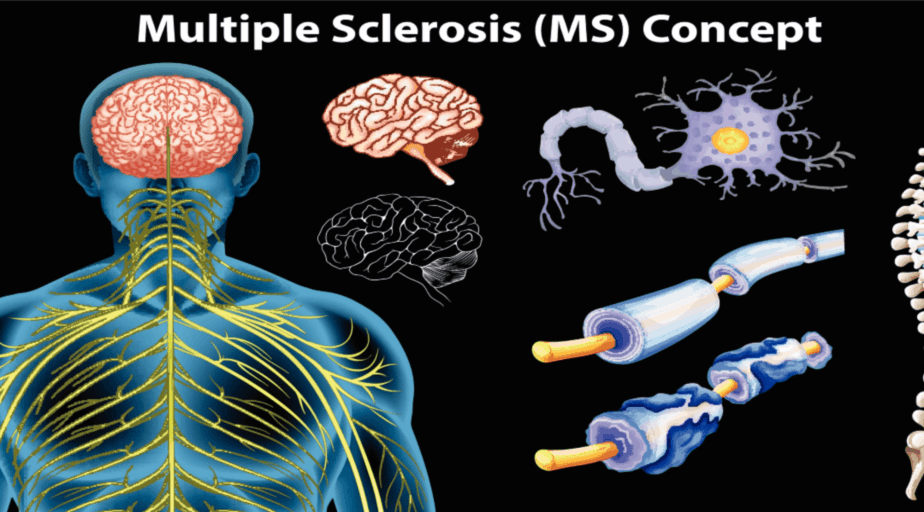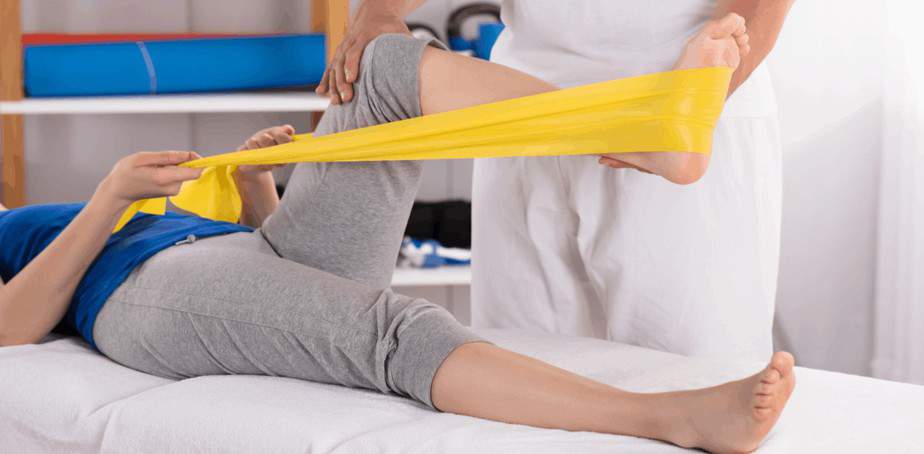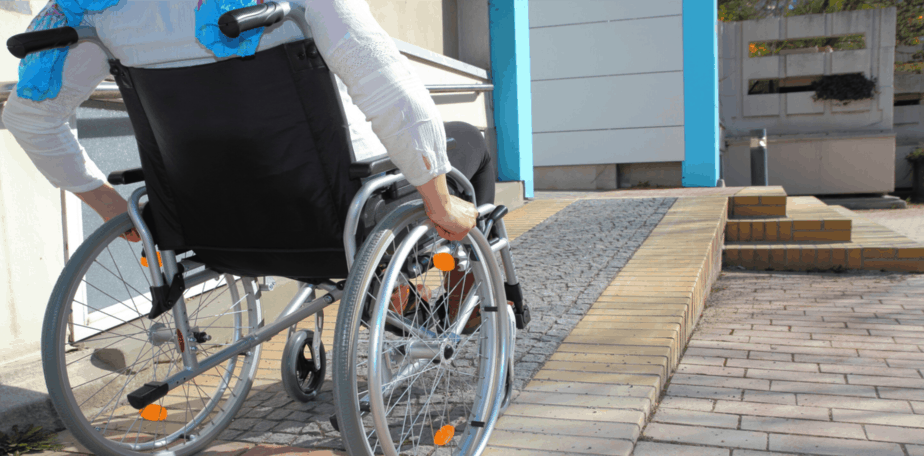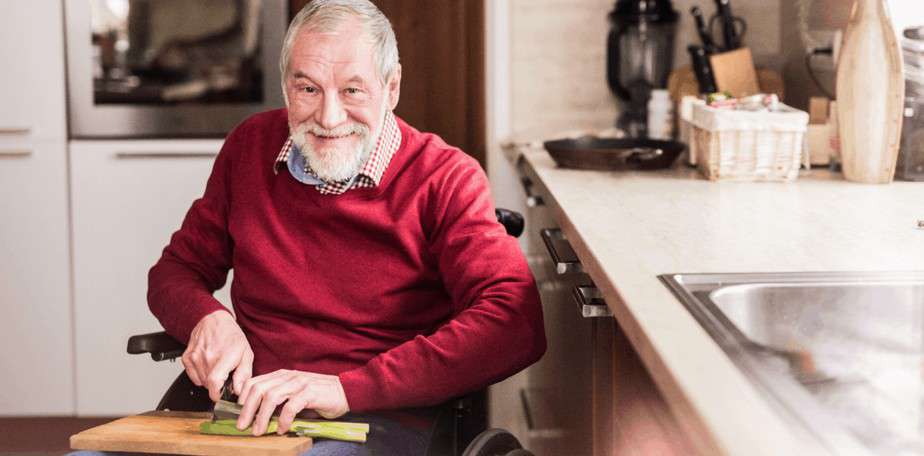Multiple Sclerosis and Rehabilitation
Authored by Michelle Eliason, MS, OTR/L, CKTS, C.D.S.
Common Symptoms of Multiple Sclerosis
Multiple sclerosis (MS) is a neurodegenerative disease affecting the central nervous system (brain and spinal cord). During the progression of MS, the immune system attacks the myelin covering your nerve fibers. Myelin is the protective covering surrounding your neurons allowing your brain to communicate with the rest of your body. When this covering begins to breakdown, the ability for your brain to communicate with your organs and muscles also begins to breakdown. Over time, this lack of communication affects physical function and skills for independence. After receiving a diagnosis of Multiple Sclerosis (MS), it is crucial to find a trustworthy long-term therapy team consisting of occupational therapy, speech therapy, and physical therapy to ensure you are maximizing function throughout every stage of its progression. Early intervention and oversight of symptoms will greatly benefit you during this journey.
Common symptoms include:
- Increased fatigue (most prevalent)
- Numbness or tingling in the hands and feet
- Muscle weakness
- Severe stiffness at times (spasticity)
- Walking difficulties
- Slurred speech
- Cognitive changes
- Depression
For additional warning signs of Multiple Sclerosis check out this article. Discover more information regarding the resources for the National Multiple Sclerosis Society through the Multiple Sclerosis.

Meaningful Activities (Occupations) affected by Multiple Sclerosis
- Moving and turning (stiffness and decreased flexibility)
- Walking (numbness and tingling in feet)
- Standing tolerance while cooking a meal, using cooking utensils, and holding a pot/bowl/plate
- Taking care of children or parents due to fatigue and muscle weakness
- Coordinating large movements
- Eating, fastening buttons, putting on makeup, shaving, turning a key, opening a jar, and writing (decreased dexterity, fine motor coordination)
- Decreased endurance and stamina for all tasks
- Decreased memory, problem-solving skills, executive function, and motor planning affecting all ADLs and IADLs
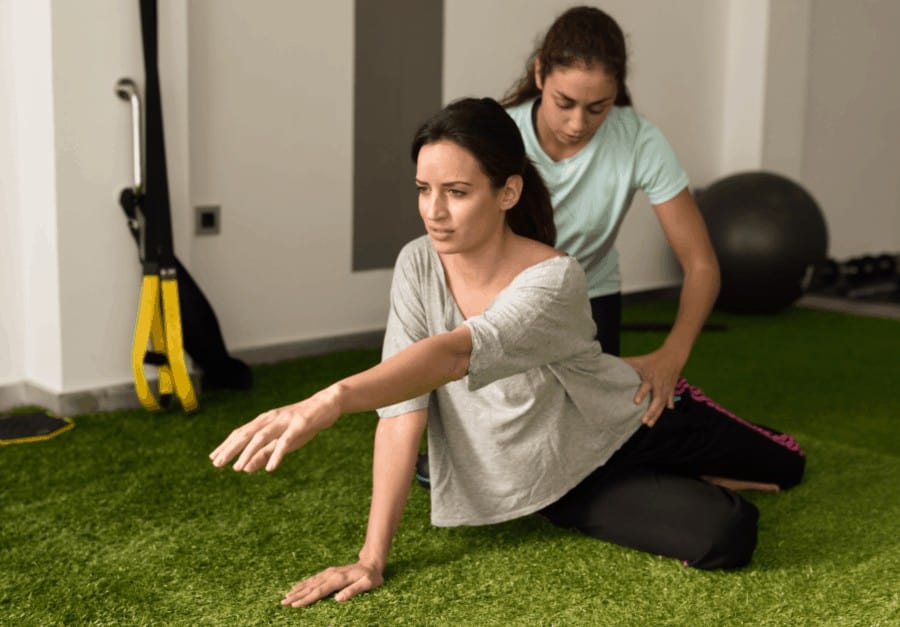
What does occupational therapy address during outpatient therapy?
- Offers you a comprehensive evaluation
- Balance and mobility strategies
- Upper body and lower body strengthening
- Education regarding simple stretching and range of motion programs to maintain flexibility and prevent muscle tightness
- Activity Modification and learning compensatory methods when needed
- Education regarding energy conservation techniques
- Cognitive changes (memory, recall, information processing)
- Functional performance during ADLs and IADLs
- Recommendations for adaptive equipment, durable medical equipment, and mobility aids.
- Home assessment and screening for appropriate home modifications
It is important to understand the body’s response to neurodegenerative illnesses and to always look for a second opinion if you have been diagnosed and told therapy will not be effective. Remember that your brain has a desire to find new pathways and new ways of accomplishing meaningful activities (IADLs or ADLs) after an injury (neural plasticity) and the function of neural plasticity exists until the day you die.
What are some additional problems outpatient occupational therapy can address?
- Your ability to move (upper and lower body mobility)
- Range of motion including effects of a joint contracture, spasticity, or flaccidity
- Your ability to take care of your own personal care (ADLs)
- Your ability to complete essential activities for independence (IADLs)
- Learning techniques to improve your planning, reasoning, and organization
- Getting into and out of your home
- Working and returning to work
- Wheelchair Assessments and Positioning
- Community Mobility
- Remaining independent in your home
- Addressing personal concerns, worries, and psychosocial barriers that may be preventing rehabilitation progress
References
Multiple sclerosis. (2019, April 19). Retrieved from https://www.mayoclinic.org/diseases-conditions/multiple-sclerosis/symptoms-causes/syc-20350269
American Journal of Occupational Therapy, April 2016, Vol. 70, 7003395010. https://doi.org/10.5014/ajot.2016.703001
Ghahari, S., & Finlayson, M. (n.d.). A RESOURCE FOR HEALTHCARE PROFESSIONALS .
Godman, H. (2017, August 11). The Role of Occupational Therapy in MS. Retrieved March 12, 2020, from https://health.usnews.com/health-care/patient-advice/articles/2017-08-11/the-role-of-occupational-therapy-in-ms
Helpful Page Definititions
Functional Plateau
What is a functional plateau or functional baseline?
It can be confusing when you are told that you have stopped making progress and no longer qualify for therapy - nobody wants to hear this! A functional plateau label is given when the therapist you are seeing stops seeing progress being made toward the goals he/she set during the evaluation process. It is also considered 'reaching a new functional baseline'. This means they believe you have reached maximum progress or you will not make any measurable gains in the near future. They can no longer justify restorative therapy (therapy to bring back function).
Remember that there are other therapists with other perspectives! There are specialty therapists for each individual diagnosis and they may see different therapeutic potential! Always get a second opinion before accepting the idea that you or your loved one has reached all of your maximum potential! You may just need another approach!
Neural Plasticity
What is neural plasticity or brain plasticity?
Neural plasticity or brain plasticity is a concept known by neurological-centered medical professionals. It is your brain's ability to create new pathways to work around injured ones! This is the foundation of rehabilitation (your body's ability to repair itself). Whether you are re-learning to put weight through your joints after surgery or re-learning to open and shut your hand after a stroke -- neural plasticity is involved! If someone has had a stroke, brain injury, diagnosed with Alzheimer's or another form of dementia, multiple sclerosis, etc. ---the body's desire to maintain its ability to function does not disappear it just needs to be guided in a specific way.
Functional Activities
Occupation-based interventions are the most functional-based approach to rehabilitation. When you are invested in the activity and understand why you are doing something, your brain's ability to heal and re-learn motor patterns improves exponentially! Occupational therapists are functional rehabilitation specialists which means we are experts in translating physical strategies into functional activities! We understand that performing a sit-to-stand in the studio is much different than getting up from your favorite recliner chair! Likewise, re-learning how to move your arm or walk in the studio is much different than feeling confident entering your home or moving about the community! Buffalo Occupational Therapy always bridges this gap and includes these real-life elements as part of our outpatient rehabilitation process!
Activity Analysis
Occupational therapists specialize in activity analysis. Activity analysis is breaking down a task into its basic parts and you master each part of the whole activity in order to enable maximum independence.
Instrumental Activities of Daily Living (IADLs)
Instrumental Activities of Daily Living (IADLs) are essential for independence in life roles and required for aging in place. There are 8 activities core activities for independence including cooking, cleaning, communication, taking and managing medication, handling your personal finances, transportation and community mobility, shopping
Cooking - The ability to follow a recipe and having the stamina to prepare a meal for yourself and/or your family
Cleaning - The ability to perform light housekeeping including making your bed, doing your laundry, washing the dishes, taking out the trash, vacuuming, sweeping, cleaning your bathroom, etc.
Communication - The ability to use the telephone, the computer, have conversations with people (familiar and strangers), communicate your needs clearly.
Taking medication - The ability to sort and organize your medication or determine a compensatory method to do so as well as taking the appropriate dosage at the appropriate time.
Personal Finances - The ability to establish an organization method to understand financial responsibilities and pay your bills on time.
Transportation - Whether you are driving, calling for a driving service like a taxi or Uber, or taking public education. You must have a defined action plan for community mobility and transportation.
Shopping - The ability to plan transportation, plan a grocery/clothing list of needs for yourself and your home, have the stamina to collect your items at the store, and be able to get them into your house.
Activities of Daily Living
Occupational therapists are trained in occupations and activity analysis. An occupation is an activity that you believe is important to your life. There are many levels of occupations, but activities of daily living (ADLs) are the most personal activities and are usually the ones people find most important if they were to lose the ability to complete them.
ADLs include:
- Bathing and showering
- Getting dressed
- Going to the bathroom
- Walking and getting up and down from a chair or car
- Eating and swallowing
- Feeding
- Sexual activity
- Personal hygiene and grooming
- Being able to use personal care devices like adaptive equipment and durable medical equipment
Mobility Aid
As occupational therapists, we can assess functional movement and recommend adaptive equipment as well as durable medical equipment that will enhance your community mobility. Before we can make any recommendations, we must assess your ability to move and determine how you are walking and holding your posture, if you are presenting with muscle imbalances, the status of your upper body and lower body range of motion and flexibility deficits and finally, determine the status of your muscle stamina. After we complete this assessment, we can help you decide what mobility aid would be most appropriate for you, if any.
Types of mobility aids include cane (single point, quad cane, tripod cane), crutches, knee scooter, cane-crutch combination, walkers (4 wheeled walker, 2 wheeled walker, standard walker), walker-cane hybrid, hemi-walker, gait trainer, scooters, wheelchairs and more.
We will help decide what device would be most appropriate, help with positioning, and then train you on best practices to maximize your mobility!
Comprehensive Evaluation
Occupational therapists treat the entire person. Much like your primary care physician, we were required to learn elements of the entire body so that we could treat holistically (a one stop shop). Because of this, your outpatient rehabilitation specialist will perform an evaluation that assesses the following things:
- Personal history
- Who are you? What do you do? What makes you tick? Why are you seeking outpatient therapy?
- Physical function (upper body and lower body)
- Strength, range of motion, and flexibility
- Neuromuscular function (brain to muscle communication)
- Coordination, speed, agility, and reaction time
- Cognitive and Mind health
- Short term memory, recall, information processing, and perception of illness
- Occupational Inventory (Activity and role inventory)
- Roles you play like a caregiver, spouse, parent, employee, etc.
- Mobility inventory like the places you need to go
- IADL inventory and what activities are required for you to be independent
- Other activities that are important to you

